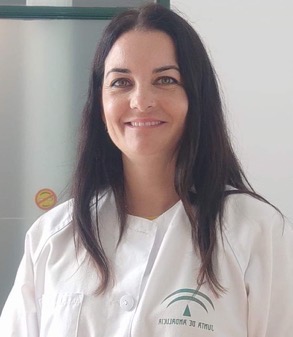
Title: “How visual impairment affects couple relationships”
Membership: Romain Bertrand, Occupational Therapist, French-speaker.
ABSTRACT
This qualitative study explores romantic couples’ adjustment to the vision loss of one partner and its consequences in daily life. Applying an occupational perspective, it examines how couples attribute meaning to their daily activities. Sixteen couples in western Switzerland were interviewed between January and June 2020. The analysis reveals three main themes: the sharing of daily activities, the effect of vision loss on these activities, and the partners’ efforts to maintain their commitment despite increasing dependence on one of them. due to vision loss. The study highlights the importance of co-management of vision loss in adapting to visual impairment and the stresses that can arise from reshaping partners’ occupations.

Title: “Intervention in Occupational Therapy from professional experience in the field of addictions”
Membership: María del Carmen Calvo Ruíz, Occupational Therapist
ABSTRACT
From my professional experience I intend to approach and share with this paper “the Occupational Therapy Intervention” in the field of addictions with and without addictive substances. I will focus especially on the basic aspects and the keys that facilitate and respond from our professional skills to the complex process of improvement and recovery of patients, through “OCCUPATION” as a means and as an end. My experience has led me to understand that only from the volition, participation, the patient’s self-discipline can achieve favorable results for the change of lifestyle. That is why it is important that the individual considers him/herself proactive in the process of change. As Occupational Therapists we will evaluate the different occupational circumstances that have influenced the addiction process and have generated a dysfunctional occupational pattern; how these have directly affected the performance in the performance of the Occupational Areas, their level of autonomy and independence. In summary, the intervention at individual and group level, must be directed to enable or rehabilitate occupational functionality, achieve the recovery of the pattern and skills / abilities linked to the execution of the performance, and the establishment or restoration of identity and occupational profile. Our mission is to implement the necessary training processes to achieve occupational integration and support the achievement of a functional, adaptive and efficient performance in the community context.

Title: “Sexual Autonomy from Occupational Therapy with a gender perspective”
Membership: Marina Joven Fernández, Occcupational Therapist
ABSTRACT
Human Sexuality is a source of health and well-being with occupational and significant burden for people and, therefore, also for women with disabilities (despite the barriers and associated myths they face). Therefore, from an occupational perspective, the workshops on sexual autonomy for women with disabilities are carried out by “Marina Joven Terapia Ocupacional” whose main objective is to promote the sexual autonomy of the attendees taking into account an inclusive and gender perspective. Through the different Occupational Therapy sessions, the existing barriers will be broken and the associated myths will be worked from an education based on Human Sexualities.

Title: “Occupational Therapy in Primary Care. Experience in Dispositivo Apoyo Sur Granada”
Membership: Marta Rivadeneira Torrecillas, Occupational Therapist.
ABSTRACT
To begin with, a brief description of the historical background of occupational therapy in primary care in Andalusia (2003) and its evolution up to the present will be given. The functions of the occupational therapist in Primary Care and its portfolio of services will be explained, with the particularities of the OT of mobile equipment and OT in the ward of a PC health center. The bulk of the presentation will be dedicated to my own experience in the South Granada Support Device, in its characteristics in geographical dispersion, referral flowchart, most frequent processes and types of patients, characteristics of the OT room in PC and material needs, community and multidisciplinary work with the EBAP team (basic team of Primary Care) and other professionals of the Rehabilitation service. To conclude, I will give a brief outline of the current work in which I actively collaborate for the improvement of Primary Care in Andalusia.

Title: “Palliative Care”
Membership: Karen la Cour, Professor, Head of Occupational Science Research, the Research unit for User Involvement and Community-Based Interventions,University of Southern Denmark (SDU).
ABSTRACT
In Europe and worldwide increasing numbers of people are living with life-limiting illnesses. Meanwhile health care services, such as palliative care are increasingly being provided on an out-patient basis and people facing end of life are therefore left to manage their circumstances in their own living environments. These conditions raise important challenges to societies and health care services to support people with life-limiting illnesses and their families to manage life at home for as long as possible. Occupational therapy with its focus on enabling occupation and everyday living can be of great importance for people living with life-limiting illnesses. Hence, a growing number of research studies are exploring occupational therapy in palliative care. Palliative care grew out of the hospice tradition and was primarily focused on people with life-limiting illnesses facing the end of life. With the raise of people living with life-limiting illnesses for extended periods of time, there has come an increased awareness that these people despite facing end of life may benefit from both rehabilitation and palliative care. Through a focus on occupation and everyday living and by providing occupational therapy based on occupation as means and ends in is possible to integrate principles of rehabilitation and palliative care and thereby supporting quality of life in people with life-limiting illness.
